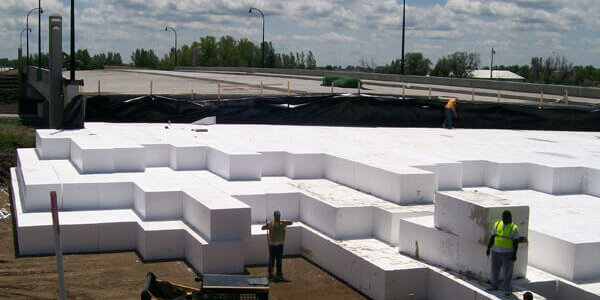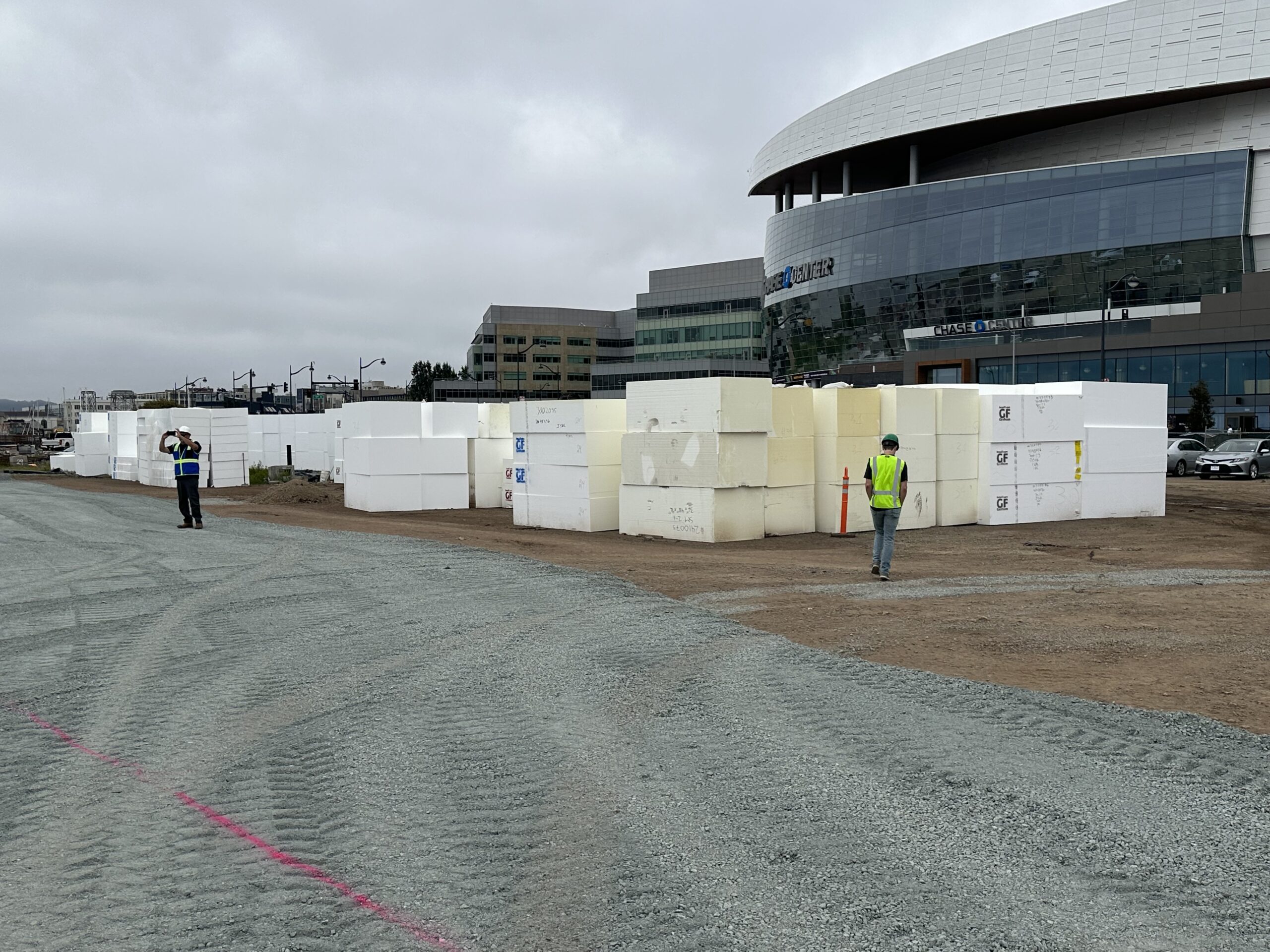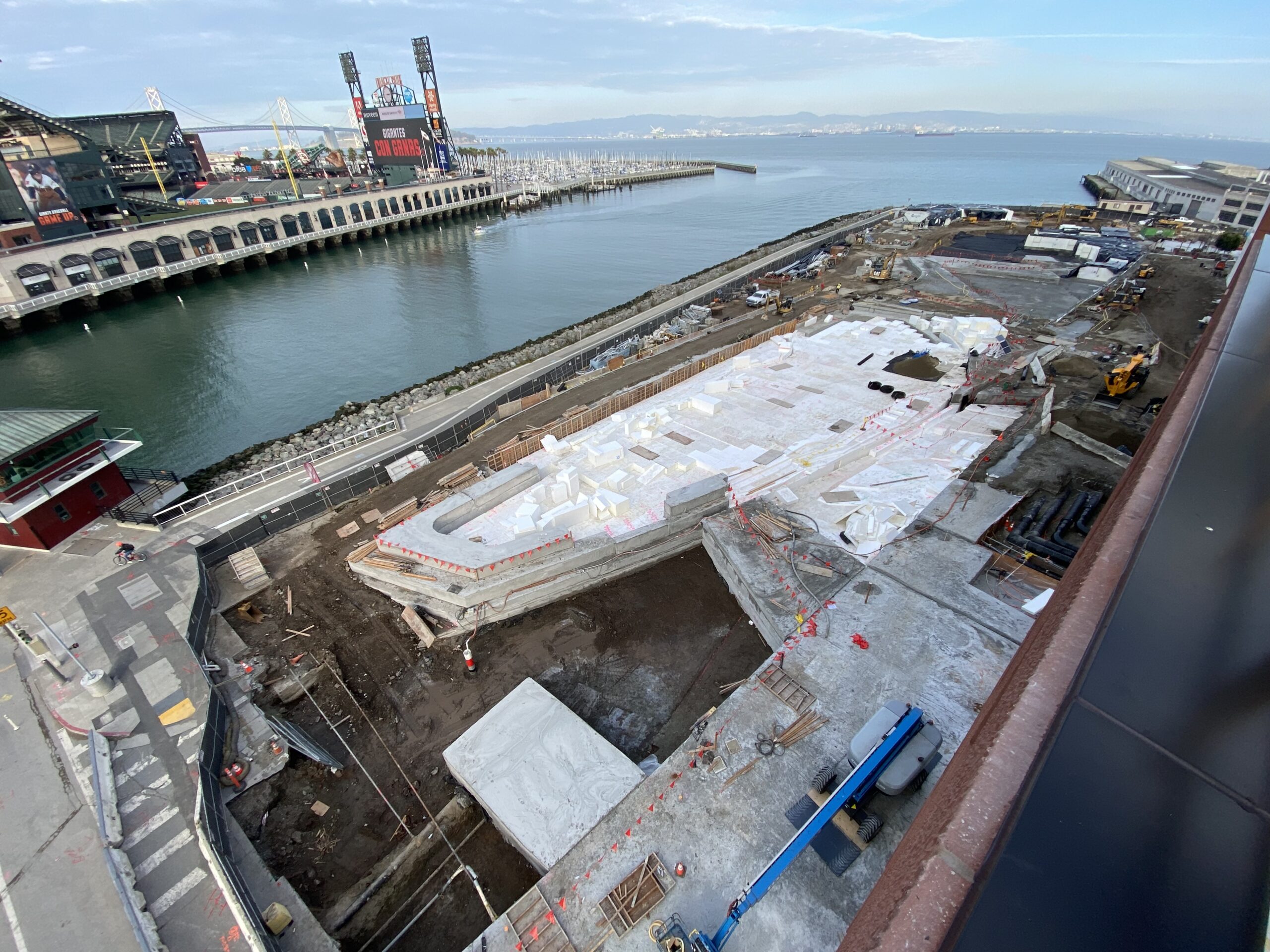The ever-growing popularity of using EPS geofoam continues to soar thanks to the fill material’s special properties and great appeal. More and more, construction site managers, architects and builders are choosing foam foundation blocks as their go-to fill material. It has replaced soil, dirt, sand, rocks, Styrofoam and other traditional materials used to implement insulation, building foundations, roofing, roadways and landscapes because it provides greater stability, durability and efficiency and overall greater value. Find out what exact properties make geofoam the better option and all the construction and applications it is replacing.
What Makes Geofoam Better than Other Fill Materials?
EPS geofoam has specific properties that make it a go-to option for many construction managers, architects and engineers. It is made with polystyrene resin and beads that are specially molded in an expansion process to give it ideal dynamics. One of the key advantages of EPS foam is that it is has a very low weight. When compared to soil, it only weighs about one to two percent of soil’s weight. This makes geofoam easy to move around within the construction process, which reduces labor costs and resources.
At the same time, EPS foam can have a higher density that gives it a highly appealing compressive strength that provides great stability in many demanding applications. It also has a low absorption rate which gives it the ability to resist moisture and growth of bacteria.
As for energy efficiency, the way EPS foam blocks and sheets are engineered gives it the capability to provide constant thermal resistance and insulation. This translates to energy savings. To add, the polystyrene material and processes used to manufacture the foam blocks are environmentally friendly. EPS is made of 100% recyclable materials and can also be recycled. The blowing agents used to form the polystyrene into blocks also have lower carbon emissions than other materials such as Styrofoam. With the growing trend of sustainable construction, EPS geofoam fits right in to moving the trend in the right direction.
The combination of ideal physical properties and the sustainability factors of EPS geofoam make it a preferred option for many applications. Not to mention, it is often times less expensive than traditional fill materials. It saves both time, resources, labor and maintenance while providing an extremely supportive foundation for different structures and landscapes.
Ground Fill
Geofoam has become a preferred fill material to replace dirt and soil. Because it is lightweight, often lighter than actual soil, and does not change shape based on its surrounding environmental factors and climate conditions, foam foundation blocks and sheets pose to be extremely reliable building and structural foundations. In many cases where dirt would need multiple loads and trucks to carry to and from a site, ultra-lightweight foam blocks only require minimum labor, time and resources to move. While dirt can shift and move when compressed, geofoam’s performance is predictable and stable, and has an extremely high compression rate that withstands repeated and higher compression rates. This makes its last longer as a ground fill.
Slope Stabilization
Using EPS foam blocks for slope stabilization purposes has also become very prevalent. These foams blocks can easily be added to existing landscapes, hills and slopes without requiring a complete overhaul of land, making them a top alternative slope construction material. Its properties also provide more support. Geofoam fill not only can resist the external conditions of surrounding factors such as natural dirt and harsher weather climates that include rain and cold, it also helps reduce the lateral load on the downslope of a hill. When it boils down to it, these foam blocks make installation easier, remove the need to completely rebuild entire landscapes and provide maximum support for slopes.
Retaining Walls and Building Foundations
Geofoam is more and more becoming the building material used for insulation and creating strong foundations. Its low absorption rate, durability and thermal insulation efficiency make it ideal for keeping moisture away and resistant against extreme temperatures and weather conditions that could affect the integrity of a foundation. Instead of using concrete or rocks to fill retaining walls, foam blocks are increasingly being used thanks to its ease of use and the low amount of resources it takes to implement it. It has high compression rates to withstand the pressures imposing on the outside of walls and maintains its integrity for a long period of time, which is exactly the attributes needed for creating a strong foundation.
Insulation
When compared to Styrofoam insulation, EPS foam block material lasts longer and at a lower price. It provides solid thermal insulation by effectively maintaining temperatures within buildings by blocking external heat or cold out and keeping heat and air conditioning in. Furthermore, because geofoam blocks can be cut into different shapes, the installation of these foam blocks for insulation has never been easier.
Buried Structures and Utilities
Buried structures and utilities are not usually designed to have additional loads placed on them and due to the lightweight properties of geofoam, it has become the ideal fill material for protecting these structures without imposing any additional weight on them. Compared to traditional fill materials, EPS geofoam can more effectively protect these buried structures against temperature fluctuations as well.
Road Embankments
Roadway and highway expansion has seen increasing demands and geofoam construction has been the solution. Because soft soil doesn’t have the ability to support heavy loads, EPS foam material has been the perfect replacement to fill this void. Foam blocks work to reduce the vertical stress that’s placed on roadways and embankments and can withstand high compression rates. It has been a perfect fill material replacement for locations that have weak soil or require some sort of protection from harsh climates. Geofoam is highly resistant to abrasions, punctures, vapor transmission and chemicals, and is also flexible and tough. This makes it a very fitting material for roadways and road embankments because it provides stability, reliability and endurance against all the conditions roadways experience.
Roofing, Pools and Landscaping
EPS foam blocks are increasingly being used to create roofing, pool foundations and landscaping thanks to its thermal effectiveness and resistance to absorption. Furthermore, foam blocks can be easily molded to specific dimensions to create unique structures that come with the territory of constructing roofs, pools and landscapes. Blocks can be stacked and fit along side-by-side of one another to form specific geographies within this setting.
Why Geofoam Block Construction?
At the end of the day, EPS geofoam simply just beats out traditional fill materials like soil and concrete due to its favorable attributes. It’s not only able to bear a higher capacity, which translates to more support and less compressive damage, it is essentially just easier to work with. This ease of use is extremely relevant when it comes to building foundations and structures that call for specific dimensions. Instead of interrupting and completely redoing a foundation or landscape, foam blocks can be cut and shaped and effortlessly moved into place as an additional support. These blocks work synergistically with the environment that they are placed in.
Whatever your construction needs, Geofoam International has got you covered. We encourage replacing traditional fill materials with EPS foam blocks. The advantages of using foam blocks to construct are very appealing to anyone who wants sustainable, smart construction and the best value out of a fill material. If you’re interested in EPS foam for your next project, look to Geofoam International to help customize and cater to your specific construction needs. We’re here to help you with all your foam block construction needs and get you on the right track with the future of construction.









